
Photo credit : Milena Raueiser, Sućuraj, Croatia in 2018. It depicts Frane Degirolamo, rod. Modrić being interviewed by Veljko Radovniković for Izložba Sjećanje.
Sjećanje
Sjećanje (Remembrance) is an artistic, photojournalistic collaboration with designer Veljko Radovniković. It tells the story of life in Sućuraj a Dalmatian island villiage (Croatia) after WWII. A traditional time when life was difficult and impoverished. Work was hard and strenuous. The ‘means of living’ were fishing and agriculture (olives, grapes and figs). For centuries there was no significant change in people’s quality of life. They lived as their ancestors did. Life was a constant struggle but there was also a strong sense of a supportive community of family and friends.
Only after WWII was there significant change in Sućuraj with the sardine factory, tourism and better transport from mainland. This story is of 37 people of Sućuraj , born of the generation between 1925 and 1945. It honours the elders of Sućuraj . The purpose was to have their stories told - through words and portraiture - for appreciating now and in posterity.
The inspiration and motivation came over coffee in 2016. Recognising that the ‘old world’ Dalmatian culture was diminishing, David and Veljko set about to document the lives of 37 of the eldest villiagers - to have their stories told and remembered. In 2018, Veljko interviewed each person as David photographed. The simple, yet meaningful quotes were selected from the words of each of 37 participants. David edited the photos back in Sydney for Veljko to create and complete the design elements in Croatia, ready for the exhibition.
In August 2019 , Sjećanje was launched in the beautiful 17th Century church (crkva sv. Ante) in Sućuraj .The population of 250 swells in summer with tourists and extended family returning. During 10 days over 600 people viewed Sjećanje. Opening each evening, the exhibition was viewed in a respectful, reverential setting with traditional sacred Dalmatian voice and music.
“Personally , this was such an honour. Sjećanje is an exhibition so rich in purpose. It becomes more meaningful as times moves on. The theme is timeless and has no borders. I will always remember the joy on people’s faces on opening night. Poignant moments came later in the week, when a participant returned, (or family member) and spent reflective time alone.” says David.
“Photographically, the shoot was fast, with minimal time and limited latitude to re-position the subject for optimal lighting. However, the purpose was to document. In the process, the lives and stories of these 37 men and women were elevated, honoured and to never to be forgotten”
The exhibition was also inspired by my memory of Dinko Kumarić, the father of my wife, Adriana Kumarić. Dinko was born is Sućuraj in 1916, and emigrated to Australia just before WWII, in 1939. He died is Sydney in 2012. Dinko often shared stories and memories of Sućuraj with great nostalgia, love and affection”
Veljko reflects “I have never felt more satisfaction in my professional career. All the people in the village were so excited by the exhibition. Many told me that they had never had a better opportunity to describe their way of life in the past. A ‘way of life’ that is gone forever. The exhibition opening was an unforgetable evening - a wonderful experience".
“Nikad mi niti jedan projekt nije donio toliko zadovoljstva: vidjeti toliko zadovoljnih mještana, nerijetko ganutih do suza. Mnogi od njih rekli su nam da nikad u Sućurju nisu vidjeli ništa što tako dobro opisuje način života koji je zauvijek nestao. Otvaranje izložbe je nezaboravna večer, predivno iskustvo”
The Sjećanje production was greatly assisted by Nikša Vujnović (expert consultant) and Milena Raueiser (associate). The villiage Mayor, Ivan Slavić opened the exhibition and gave his official backing and personal support. Frank Kumerich photographed for media and most importantly , the elders of Sućuraj who were so willing, enthusiastic and generous in sharing their time and stories for the benefit of others.
c David Starr and Veljko Radovniković
NB: The portraits were to be re-exhibtied in 2020 , but Covid-19 prevented this. The works will be hung in the school for posterity and for re-exhibtiing in the future.
All quotes can be read below the following portraits

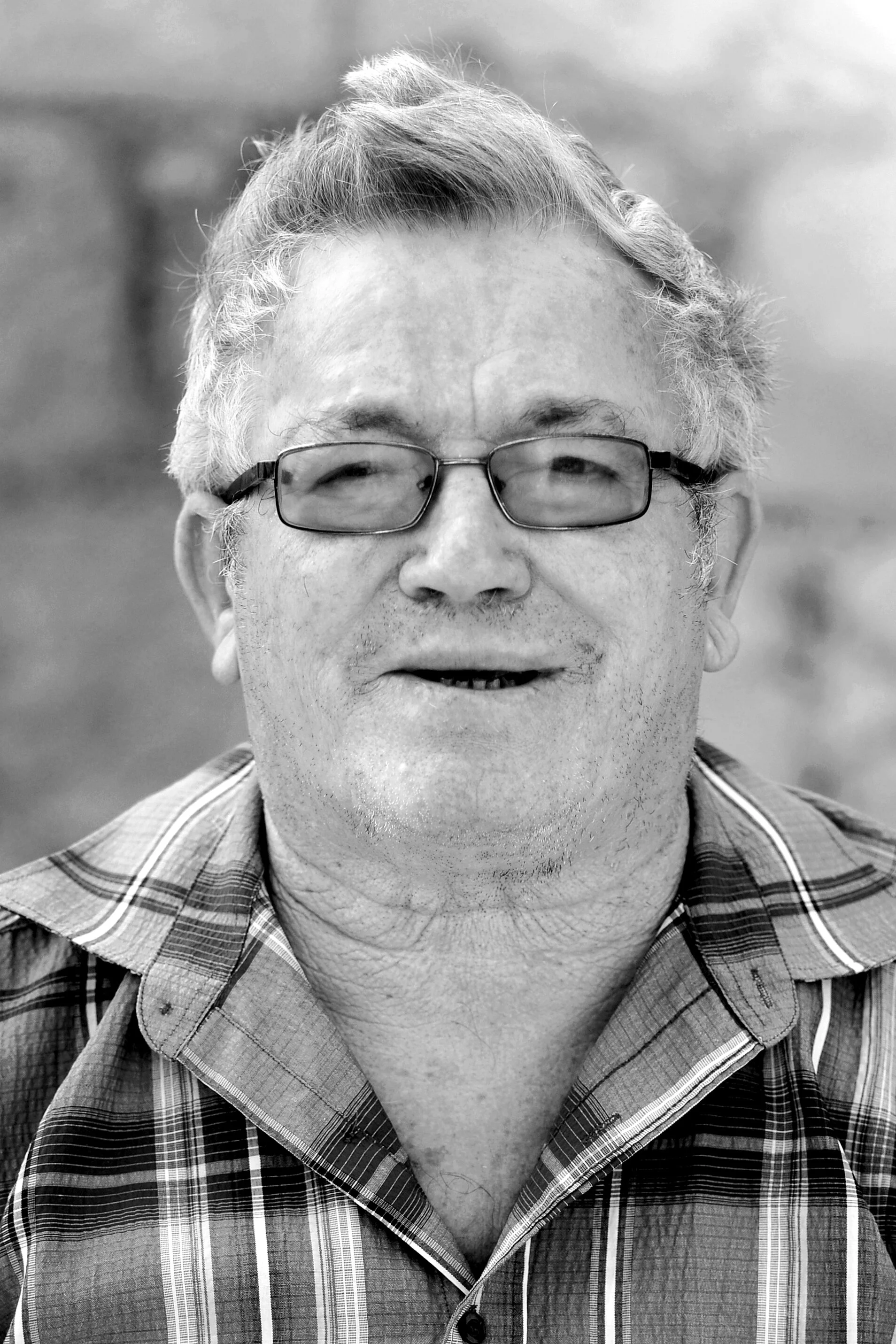





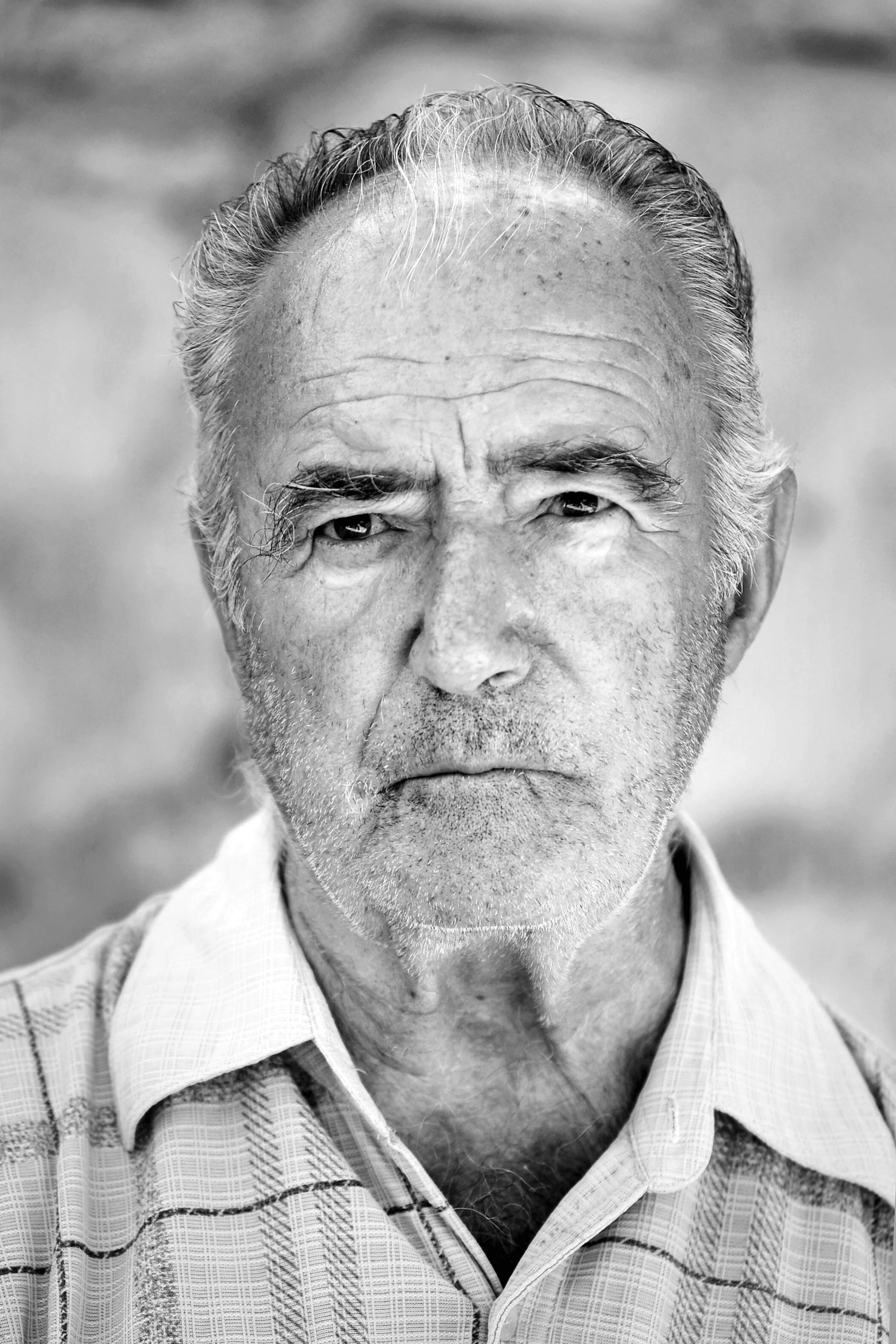


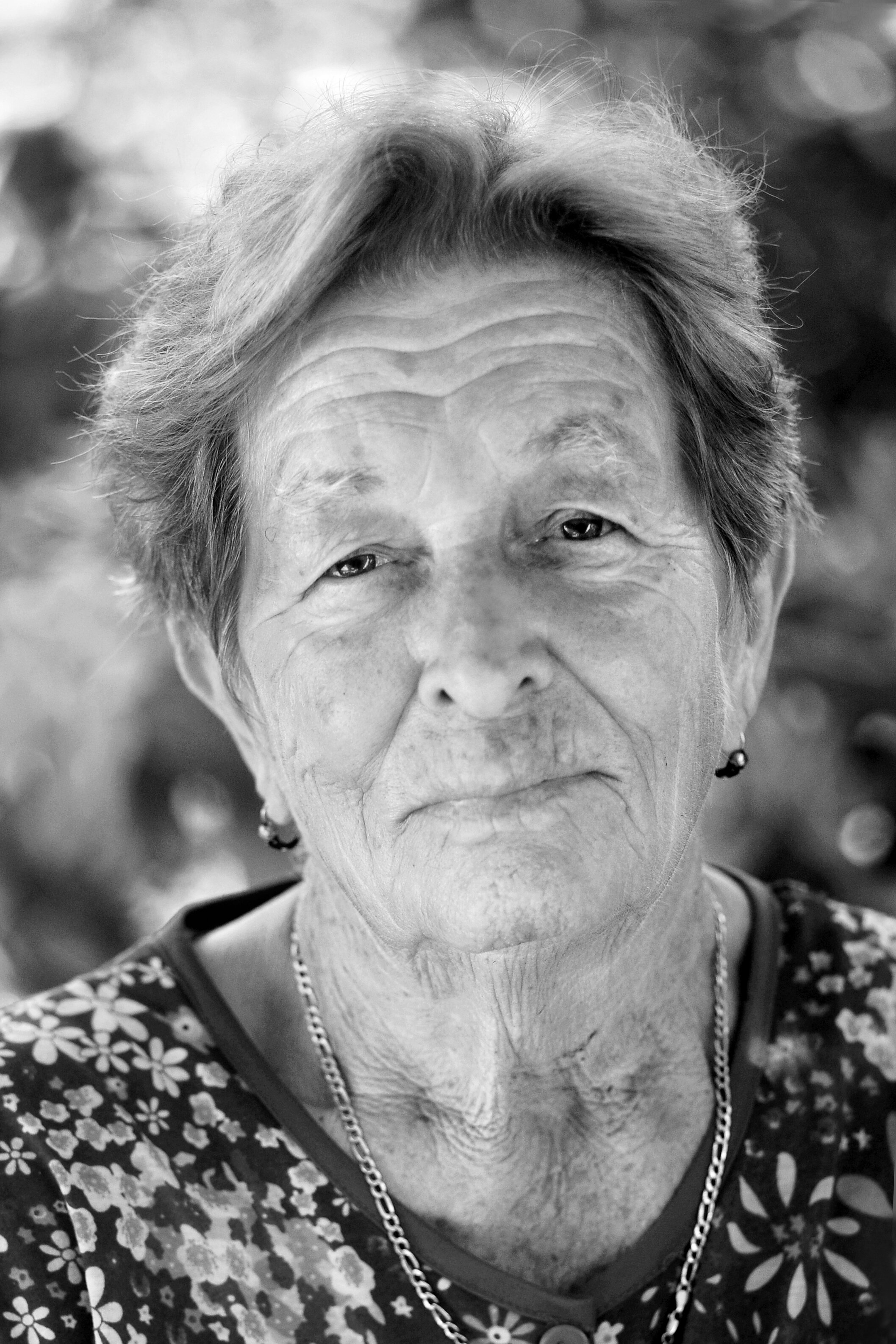






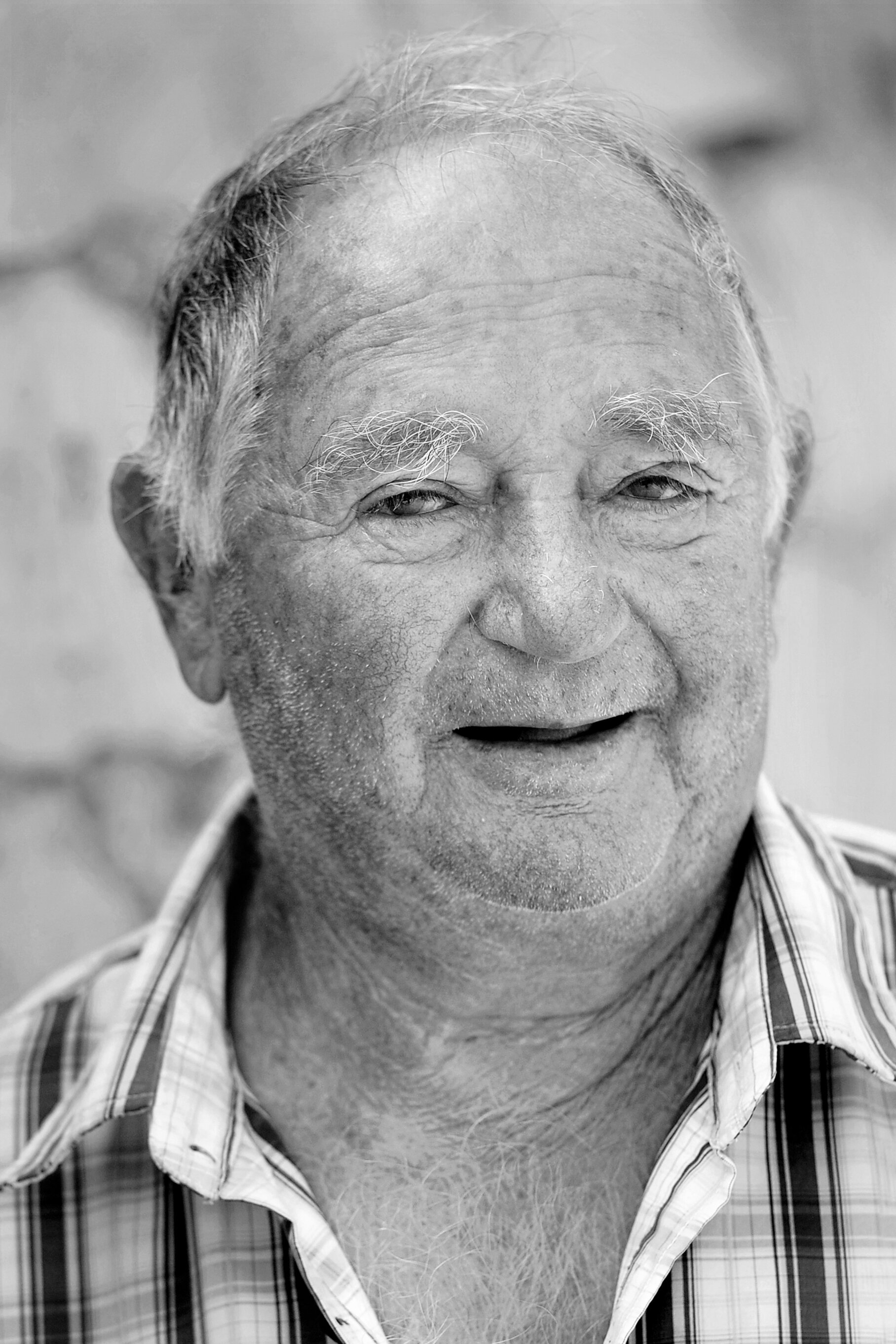





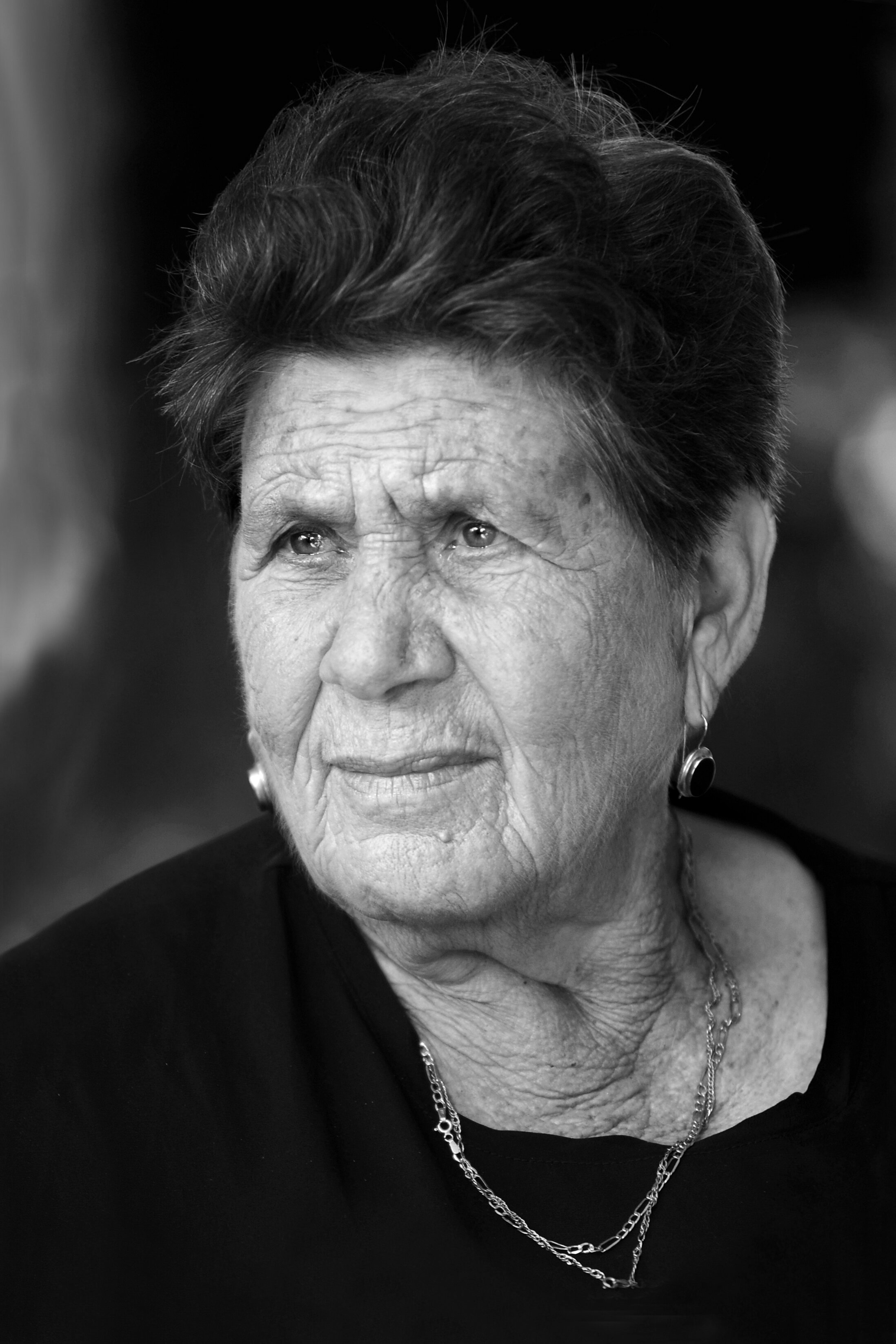








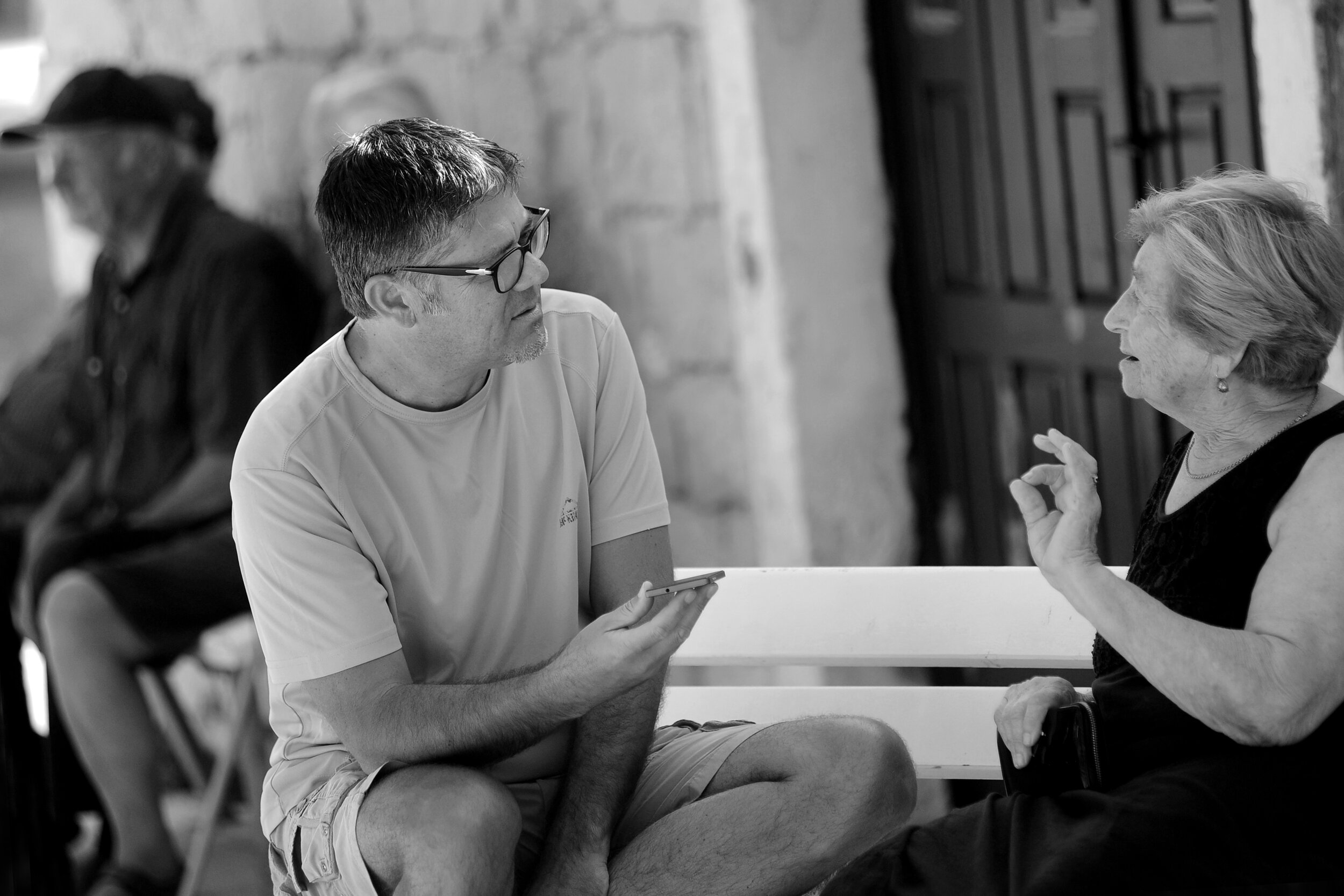


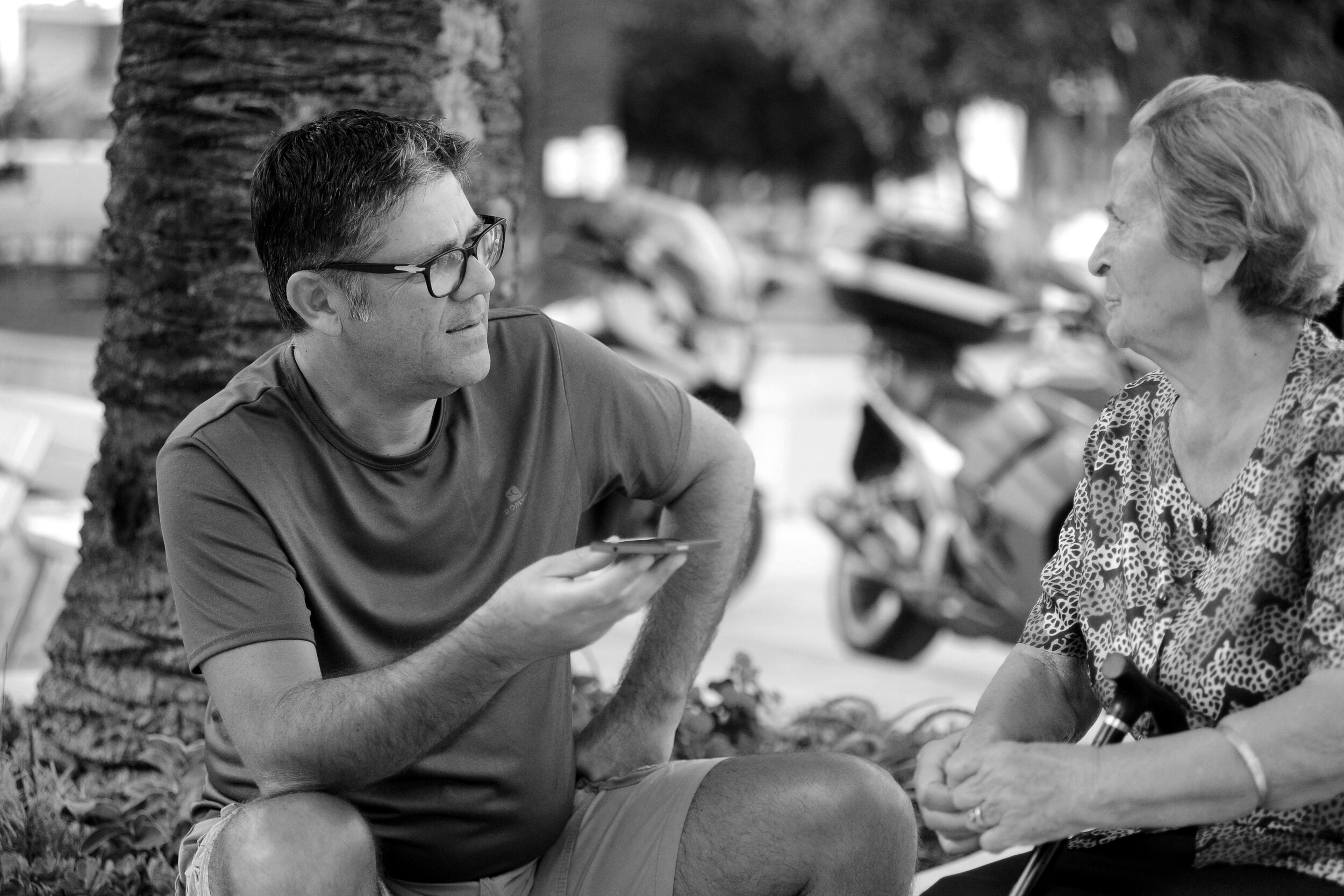
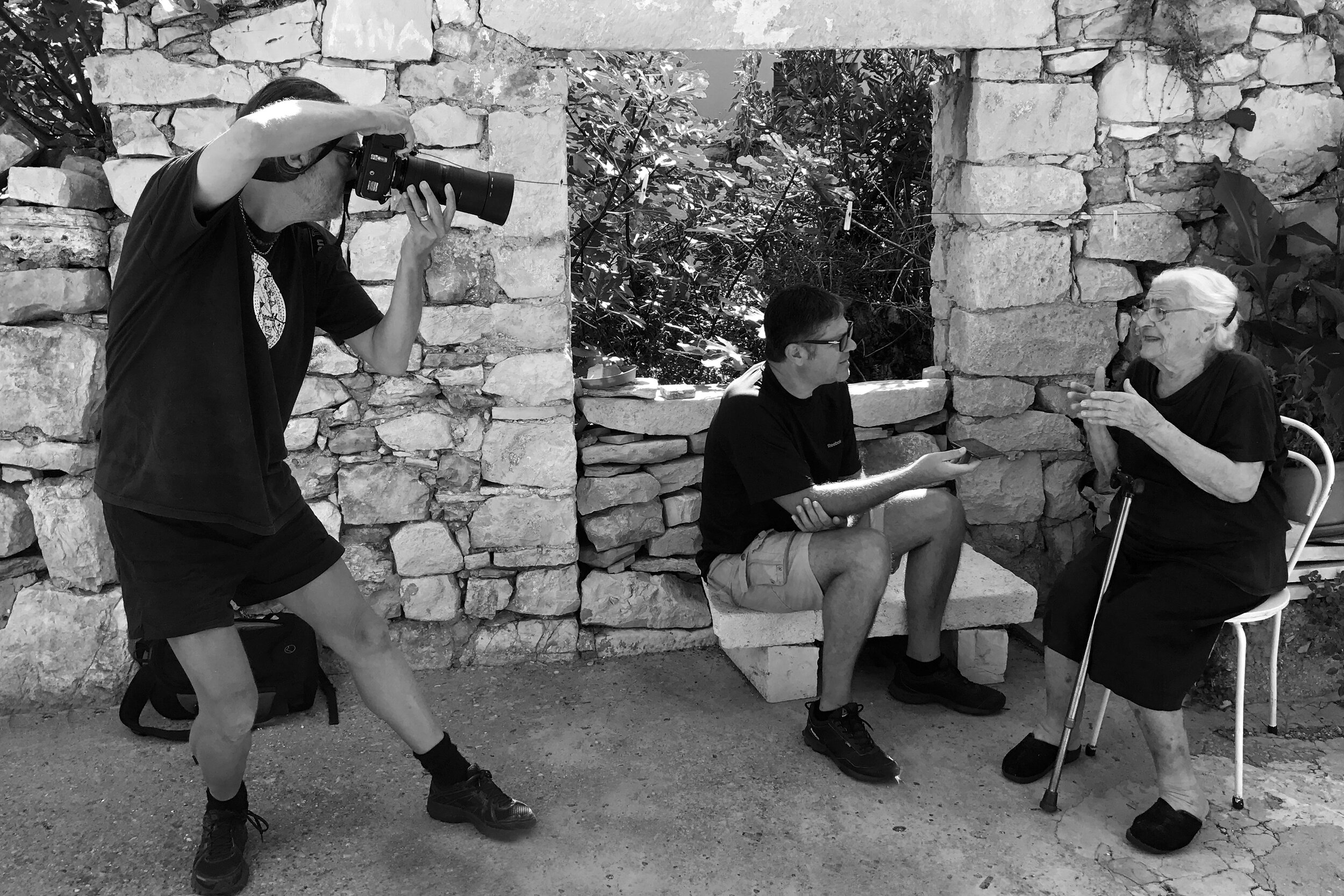
Sadly, since the exhibition in 2019, 9 of the 37 Sućurani elders have died………but their stories live on.
(Their words below, translated to English)
Mate Slavić (1939- 2020) “For four years in New Zealand, I dreamed every night about Sućuraj - I knew I would come back”
Marija Franičević (1925-2020) “My father was a lighthouse worker and also cultivated grapes, figs and olives. If able, we all worked.”
Nikola Jeličić (1936-2020) “After WWII everything was left devastated and destroyed. The worst was from 1948-1952. Since 1953, it began to improve”
Dinko Slavić (1931- 2020) “ There were as many donkeys as there were cars now. I remember their were 80 donkeys in the villiage
Tere Vitali (1939- 2019) “Family, community, love that is how it was, we helped each other. It was like we were all one family”
Blaženka Jeličić (1932- 2020) “My father had two light boats and a fishing net for sardines. There were hungry people here but not in my house”
Jakov Kačić-Bartulović (1939- 2020) “ I learnt how to be a boat builder in Korćula. In order to learn the trade ,I had to show respect to the master and only then could I learn the craft.
Frane Degirolamo, rod Modrić (1926-2020) “When we returned from Slavonia after WWII, we found nothing here. Everything was broken and destroyed”
Velimir Erceg ( 1931 -2019 ) “There was no roof after the war. The people of Sucuraj were about to rebuild voluntarily - without wages.
Below are further quotes from the Sućurani people who took part in Sjećanje - translated into English
Andrija Jerković, Žile (1929-) ”I had bees, 100 beehives. It fed me, I produced 3 to 4 tons of honey a year”
Smiljana Slišković (1931-) “We lived in the lighthouse as my father was the lighthouse keeper. We were four sisters and two brothers”
Radivoja Prizmić, rod. Vuljan (1931-) “One evening when I was pregnant, I brought goat food from Perna. The next morning I gave birth to my son, and it all seemed like nothing. Such was villiage life-unlike today”
Franjo Franičevic (1935-) “There were also quarrels, but people loved each other. There was singing, rejoicing and carnival….”
Bosiljka Brkan, rod. Juričević (1933-) “ We picked alot of white mustard plants for selling. I was a little girl and I got blisters all over my hands”
Tere Petrićević, rod Kumarić (1933-) “It was difficult for us…but my father was in New Zealand, and if not, I do not know how we would have survived”
Frane Modrić (1936-) “We had a boat. ‘gajeta’. We went fishing and hunted for sardines. We threw nets and it served us to go to work in the field, in Mrtnovik. We went far, all rowing”
Marija Pavlović, rod Franičević (1934-) “There was poverty then. There were many children. All hungry, barefoot and naked but there was singing and painting together. More so than today”
Ante Vuljan (1936-) “The first ferry came to us in 1963. A small ferry carrying 12 vehicles. For a year I worked on it as a guardian”
Jela Franić, rod. Mihaljević (1936-) “At the age of 9, I was hired to salt the sardines. I was the eldest daughter, so I had to help my mother and father”
Frane Mihaljević, Tić (1937-) “I did not have a boat. I did not have anything. I went fishing with others.”
Tere Mihaljević, rod. Pavlović (1936-) “I can’t describe how close and connected we were - today it is unimaginable”
Vlatko Vuljan (1937-) “We built ships for others and we made weirs from wires and sold them”
Mandina Jerković, rod. Jeličić (1937-) The factory was like a source of life. The women worked there, and fishermen could immediately sell fish.
Ante Kuamrić (1938-) We mainly hunted for blue fish, which was given to the processing plant.
Dinko Kuluz (1940-) “At that time everyone was "all right". All companions would come to defend theirs.”
Marija Jerković, rod. Mihaljević (1937-) “I worked at the factory. The work was wet, heavy and miserable but we had a regular salary, and could get a loan.”
Ivan Pretričević (1940-) “There was hunger and trouble. I wish I could eat more bread ... one slice in the morning, one slice in the evening “
Ivan Jeliči, Gunja ( 1941-) “The factory was a rather difficult workplace, especially for women, because it was all done manually and in the cold. However, we had perhaps the best fish in Yugoslavia”
Blaga Mihaljević. rod. Pavlović (1940-) “I was 14 when I went to work at the factory. There was work every day. When I came home, I would wash myself, dress, put make-up on and go out to dance”
Petar Pavlović, (1941-) “We caught just a little bit of quality white fish. We sold a little but would mainly divide amongst the village”
Marica Vuljan, rod. Slavić ( 1941-) “The factory in Sucuraj was significant. After it opened, Sucuraj developed. There were about 70 women and 20 men working there”
Ante Mihajević, Palermo (1942-) “I was in New Zealand for three years, but I had to go back. I loved my lighthouse on the point of Sućuraj. I missed it”
Franka Jeličić, rod.Jeličić (1942-) “I belong to the very first generation that completed school in Sucuraj after the Second World War. There were 30 children.
Josip Pavlović, (1943-) “There were 8 fishing boats in Sucuraj - each with about 10 people. All the fish were sold to the factory”
Dinko Franičević, (1946-) “It was hard as we didn’t have our own fields – so my father was in charge of 10% of other people’s fields”
Perina Mauna, rod Franičević (1942-) “We were all together and we all loved it. We shared the last slice of bread.”
Mijo Franičević, (1946-) “I was in Australia and in America. I was not sorry to come back because, yes, I did..…..I loved Sućuraj”
****************************************************************************************
Photographs not for sale
Below : Photographs from the Opening Night , crkva sv Ante ( St Anthony’s church c1663 ) August 8th , 2019, Sućuraj , Croatia



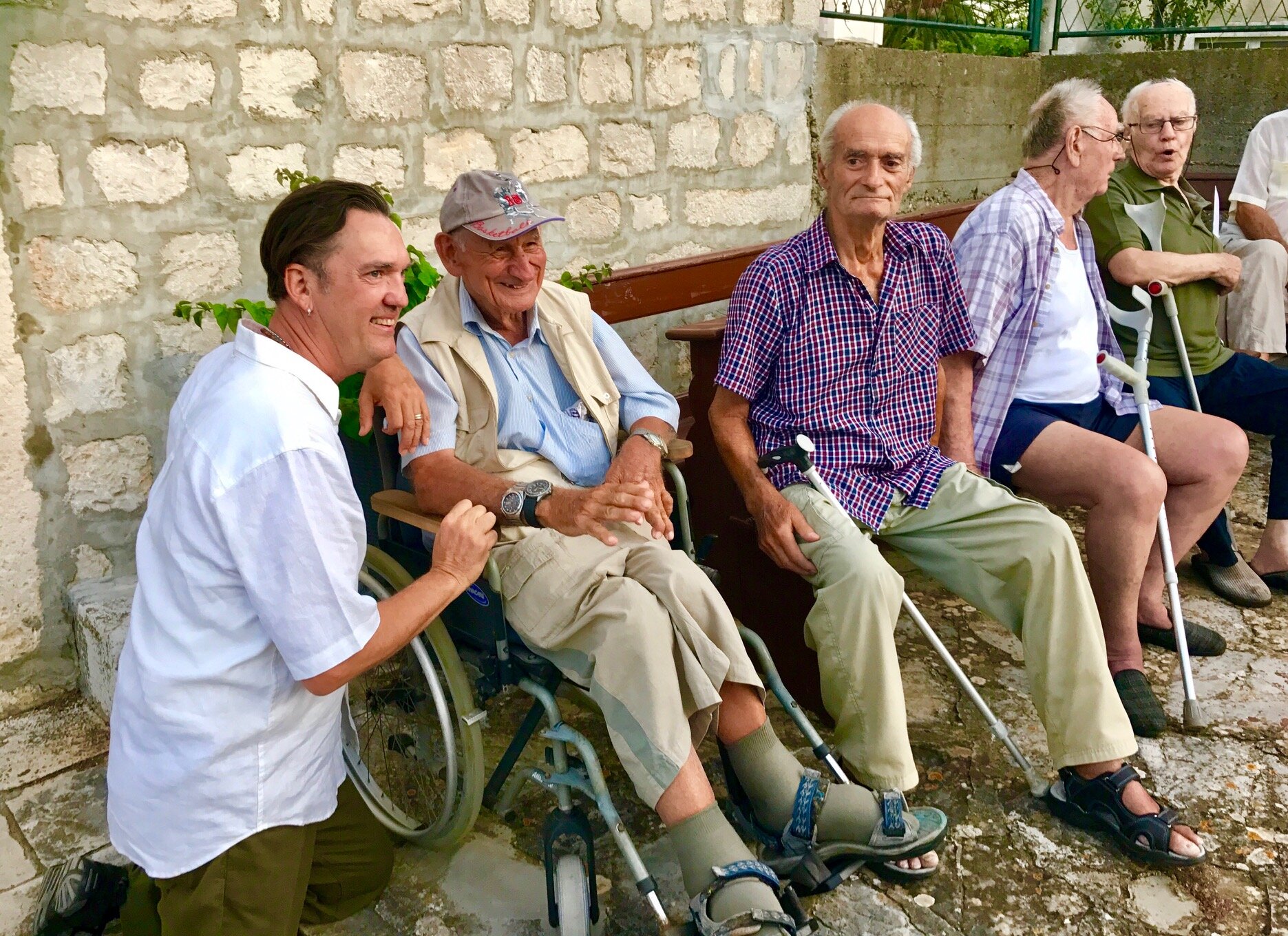

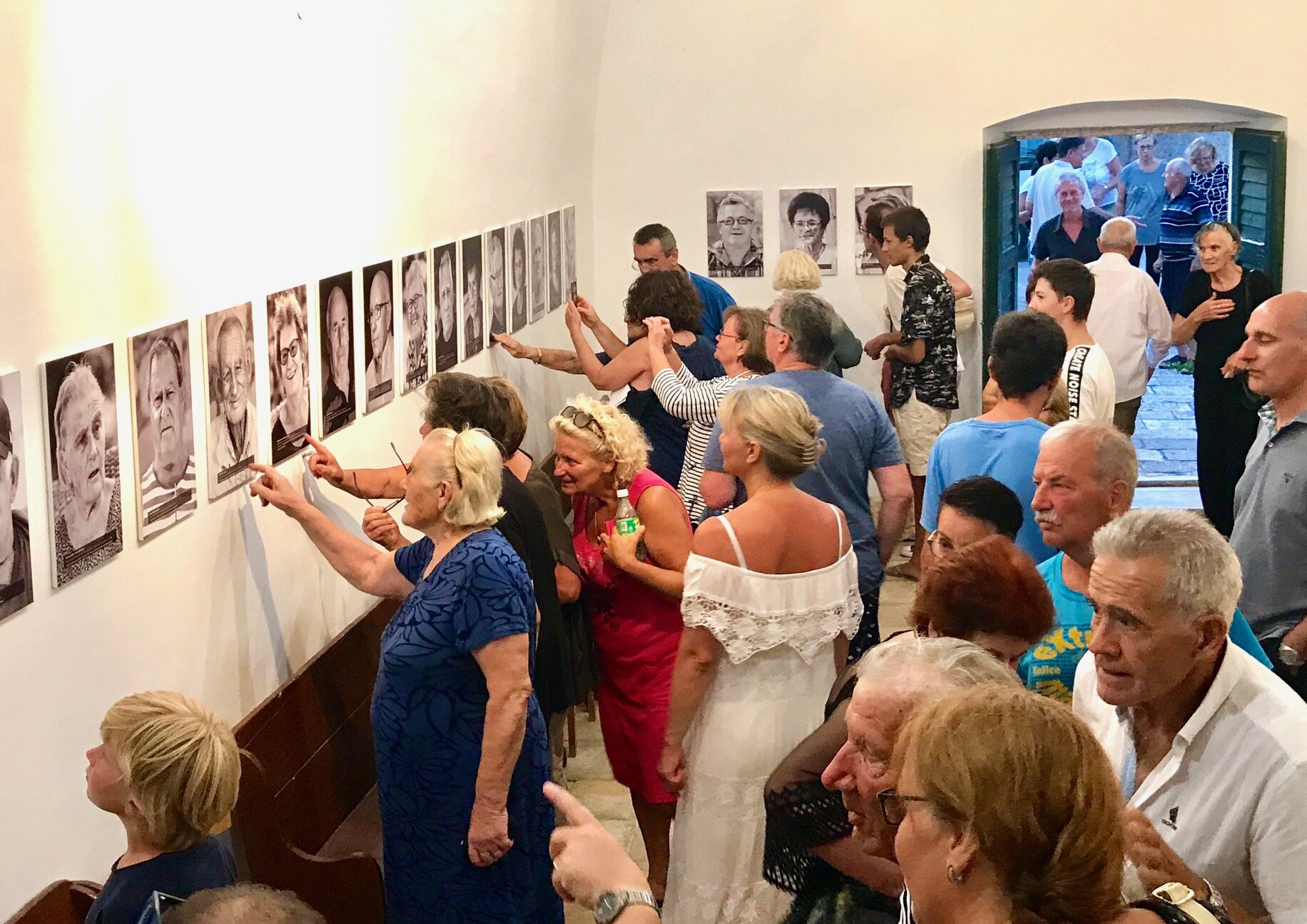













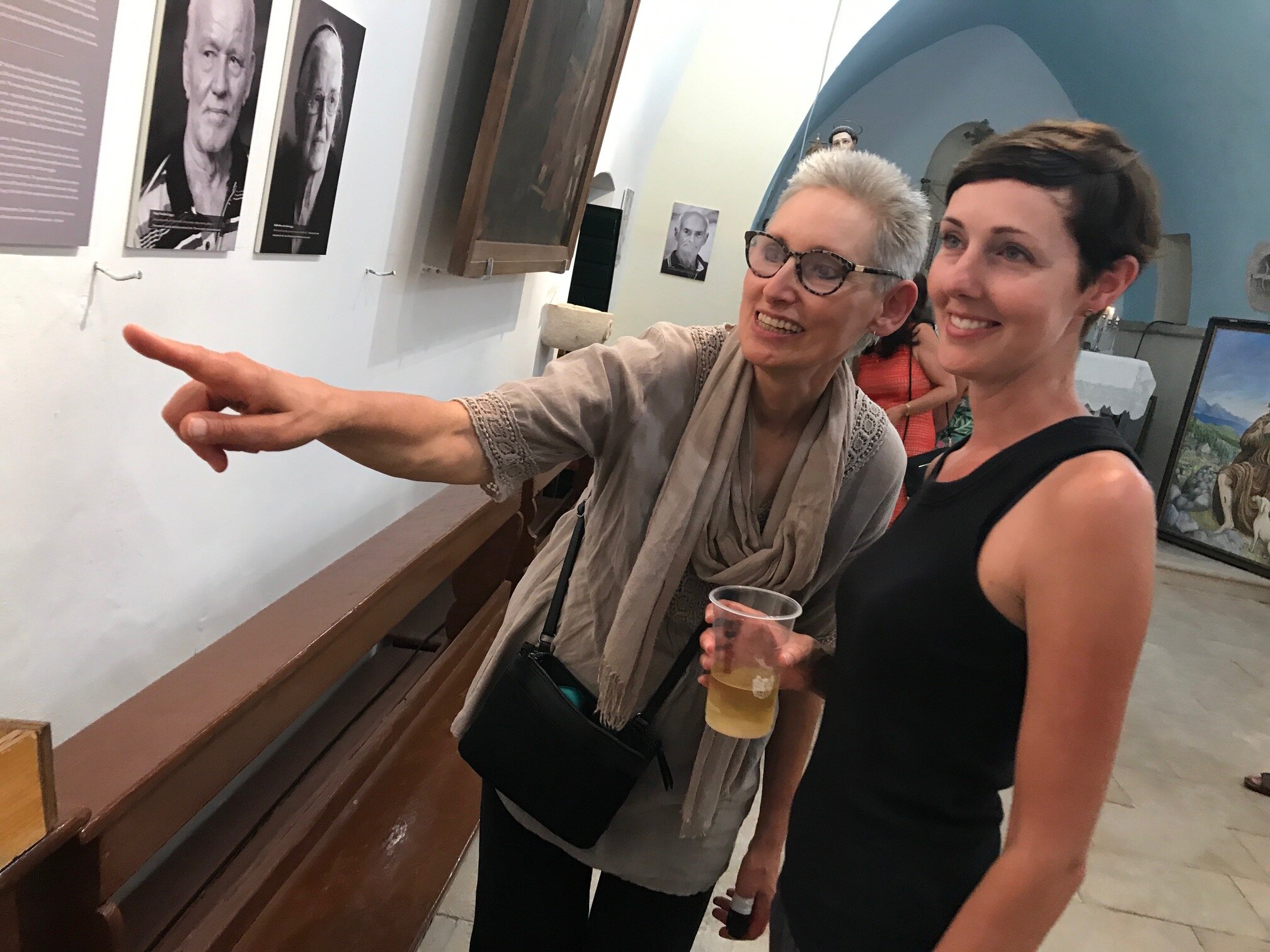







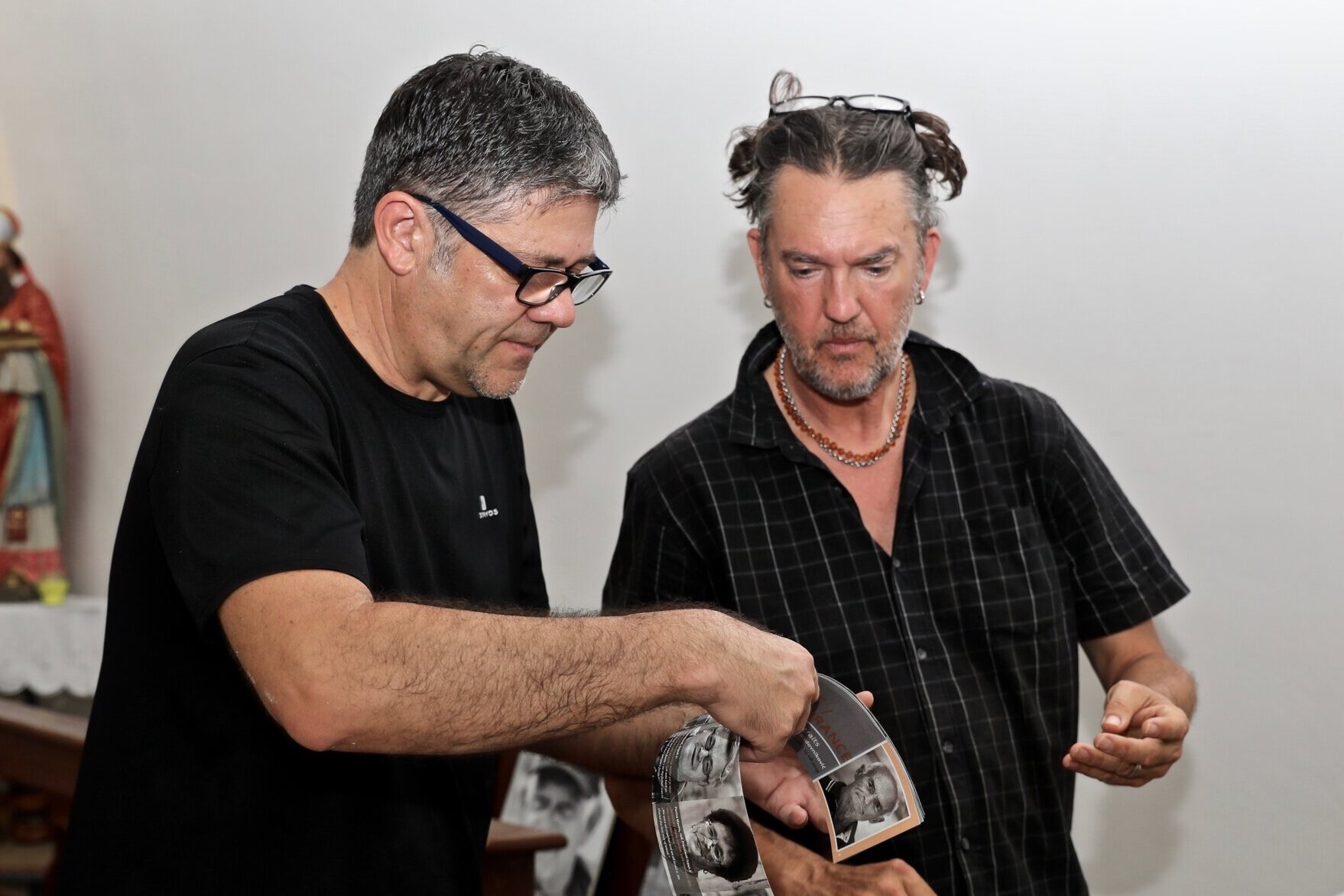


‘From the mouths of our elders comes a fountain of wisdom’
Ransom Riggs